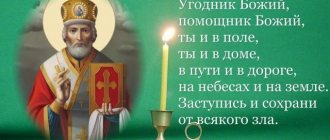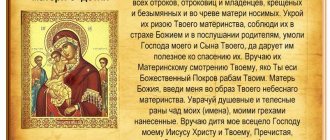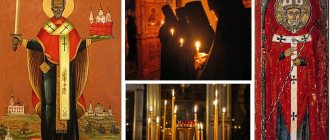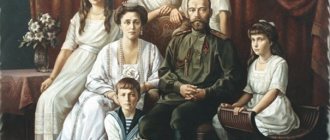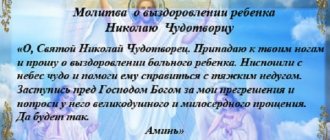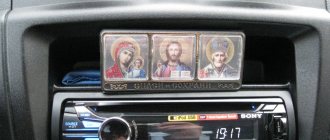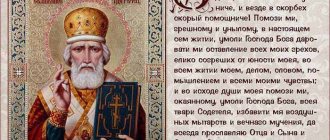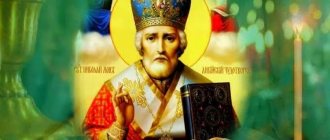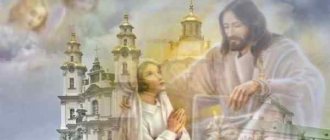Canonization of the family of Nicholas II
The basis for the canonization of the royal family, the elevation to the rank of martyrs of the last Russian Emperor Nicholas II, his wife Alexandra Feodorovna and their children, was the execution without trial in 1918 in the Ipatiev House in Yekaterinburg due to a coup d'etat.
The canonization process was very complex and controversial. Servants of the Orthodox Church and ordinary people gave a large number of arguments both for and against this action. Due to such difficulties, the final decision was made only in 2000. The spiritual feat of the king and his family was noted as a true manifestation of humility and adherence to the commandments of God and was rewarded by canonizing the entire family as holy Passion-Bearers.
In addition to Tsar Nicholas himself and his family, other representatives of the Romanov dynasty, who were killed the day after the execution of the imperial family, were also canonized as martyrs. In the Orthodox Church they were called Alapaevsk martyrs.
Alapaevsk martyrs
The term "Passion-Bearers"
In the Orthodox Church, the term “passion-bearers” was used to describe all Christian martyrs who died a violent death or suffered suffering in the name of Jesus Christ. Unlike the great martyrs, these people did not accept their death in the name of faith, but they are also canonized. Because they followed one of the commandments of Jesus Christ - goodness of character and forgiveness.
Elevation to the rank of martyrs
Almost immediately after the execution of Nicholas II, his family and associates, unrest began to arise among the people. Their initiators were people who sincerely revered the deceased emperor. They admired his courage and spiritual feat, and also revered his wife and children, who remained with him until the very end.
Even those who were dissatisfied with the policies of Nicholas II did not rejoice, but sincerely mourned the death of Tsarina Alexandra Feodorovna and her children. The tragic death of the latter caused serious outrage among the religious community.
The respect for the emperor characteristic of the common people, his tragic death at the hands of his enemies, his compassion for his innocent children and wife - all this became the basis for classifying the royal family as martyrs, and not as victims of political struggle.
There were also other serious arguments for canonization.
- Appeal of entire groups of believers to various dioceses. Several tens of thousands of people asked for the speedy canonization of Nicholas II and his family.
- Confirmations of miracles and help from prayers to the royal martyrs.
- The personal high spirituality and sincere faith of the king, who paid a lot of attention to the needs of the church and charity.
- High religiosity and adherence to the righteous precepts of the entire royal family.
- Non-interference of Nicholas II in the affairs of the church.
- Charitable actions of the Empress and her daughters during the war.
However, there were also opponents to canonize the family of Nicholas II. They defended their position with the help of counterarguments.
- The emperor's indifference to the large loss of life as a result of military operations.
- Classification of Nicholas II as a traitor due to his abdication of the throne.
- Brutal suppression of uprisings and labor unrest.
- Unsuccessful state and church policies.
- The death of the emperor was not for the Orthodox faith, but as a result of political repression.
Despite this confrontation of interests, supporters of canonization ensured that in 1981 the Russian Orthodox Church Abroad canonized Nicholas II and his family as holy martyrs.
Romanovs before execution
What helped in this matter was the sincere veneration of the common people, who, despite anti-religious propaganda, immensely respected the last emperor. The loud resonance in society, supported by emigrants from the USSR, also contributed.
But despite this, only almost 20 years later, in 2000, after difficult disputes, Emperor Nicholas II, his wife and children were elevated to the rank of holy passion-bearers by the Russian Orthodox Church of the Moscow Patriarchate.
About veneration of the icon
The icon of Tsar Nicholas, which performed miracles of healing and exuded myrrh, became widely known.
The lithographic image of the Tsar was carried over the territory of Russia, as well as the entire globe. The Space Procession around the Earth (2018), prepared on the initiative of the Military Orthodox Mission, was dedicated to the centenary of the assassination of the sovereign and his family, as well as their blessed memory. After this, the shrines (lithographs) were transferred to the most significant monasteries and temples associated with the fate of the dynasty: Moscow monasteries, churches of St. Petersburg, Ipatiev Kostroma Monastery, Church on the Blood in Yekaterinburg, to the Monastery of the Holy Royal Passion-Bearers on Ganina Yama, as well as to churches Russian abroad. Twice the image of the sovereign visited the Holy Mount Athos.
The day of veneration of the icon of Nicholas II is July 17 (the date of the execution of the royal family in the Ipatiev House). On this day, all believers pray for the fate of Russia and beg for forgiveness for the martyrdom of the sovereign and his family.
The reign of Nicholas II can be assessed in different ways, but the height of his moral character has never been in doubt. He is remembered as a wonderful family man, a wonderful husband and father, a pious man and faithful to the commandments of Christ, engaged in charity and generously donating to the construction of churches.
Therefore, they pray to the icon of the last Russian Tsar for protection and preservation of peace in the family, for the resolution of family problems, for the protection of children and loved ones. The Holy Emperor is asked to protect him from the external and internal enemies of the country, from those who are trying to undermine the foundations of Orthodoxy, and to strengthen patriotic feelings. In front of the myrrh-streaming image of the king, they pray for healing from illnesses.
About miraculous healings
There are a huge number of facts about miraculous healings from illnesses as a result of turning to the icon of Nicholas 2 for help. The stories of witnesses were passed on from mouth to mouth, fame ran ahead of the image itself.
The first healing from the icon was for retired colonel Alexander Mikhailovich Vytyagov. He first heard about the icon of Nicholas II on the radio, and asked his relatives to take him to this temple, to this icon. The fact is that Alexander Mikhailovich suffered greatly during the Great Patriotic War, he had many wounds, and after some time he lost his sight. He had been blind for 15 years.
When the icon was received at the Church of the Life-Giving Trinity, it was brought to Archpriest Alexy Uminsky, at that time the rector of the temple. Turning to the abbot for help, he led him to the miraculous icon, covered him with a towel, which was completely saturated with myrrh, and began to pray. Waking up in the morning, Alexander Mikhailovich looked around his room and shouted loudly what he saw. All the household members came running to him and could not get enough of the miracle.
It also became known about the miraculous healing of a man whose illness did not allow him to feed his family. No doctors helped. When he began to pray zealously in front of the icon of Tsar Nicholas II, his health returned.
There was also a case recorded in Ukraine when a woman suffering from ascites received relief from her torment. Her belly was so huge that it made it impossible to breathe. When the woman began to pray to Tsar Nicholas, her stomach sank, the pain stopped, and the sufferer died calmly and quietly.
A large number of healings from diseases have been recorded. People's stories, passed on from mouth to mouth, propelled the glory ahead of the icon itself. People sought to quickly get to the image in order to get help in solving their problems.
One man talked about how he received grace from the icon of the Emperor. One day he fell ill, he had a high fever, which could not be brought down by anything, the medications did not help, and his arm even began to lose consciousness. He couldn’t work, but he had to feed his family. One day he came to the temple and began to pray to the martyr Nicholas II for healing, and then venerated the shrine. He felt immediate relief and was able to work the next day.
There is another recorded case already in Ukraine. One woman suffered from ascites for a very long time, all the fluid accumulated in her stomach. The stomach was enormous, so the poor woman suffered greatly from pain and heavy breathing. When she arrived at the temple, she prayed for a long time. After she fell to the miraculous image, her stomach sank. The doctors were shocked and could not explain it. The woman prayed and thanked God and Nicholas II for alleviating her suffering, and soon she died quietly and calmly.
The day of veneration of the icon of Nicholas II is July 17. On this day, everyone prays for the fate of Russia, and also begs for forgiveness for the death of the Tsar and his entire family.
Cases of miracles
At the moment, you can find several reliably confirmed cases of divine intervention after reading a prayer to the Royal Romanov Passion-Bearers.
- One of the first witnessed miracles is the emergence of a Cossack unit and their escort train from an impassable swamp. According to all the beliefs of local residents, the area of the swamp where people were surrounded was impassable. It was possible to get out of that quagmire only along the only path, which was blocked by the pursuers. In a moment of despair, the priest Father Eli turned to the Tsar-Martyr Nicholas II with a request for help. People managed to get out of the swamp, but all further attempts to find the path were unsuccessful.
- In 1925, one of the Serbian newspapers described a case when Emperor Nicholas himself appeared to a woman in a dream. He told her that the son, whom she considered dead, was alive and would soon return to his mother. The vision came true: a few months later the young guy returned home safe and sound.
- In October 1991, another case of miraculous intervention was documented. Two women, lost in an impassable swamp, were lucky enough to find a way out of the quagmire. Later they said: at the moment when they realized that they were completely lost and lost, their only hope was a prayer for help to Tsar Nicholas II. As soon as they uttered their last words, a swarm of fireflies immediately flew in and showed them a safe path through the swamp. Researchers of the facts of the miraculousness of prayers to the Royal Romanov Passion-Bearers believe that what is noteworthy in this story is that one of the women was not a true believer before this incident.
- In 1998, Moscow doctor Oleg Belchenko, who was given an icon depicting the sovereign, began to notice small spots on it. They periodically appeared and disappeared. Interested in this phenomenon, he turned to a familiar clergyman for clarification. Subsequently, the fact of myrrh-streaming was witnessed by several more parishioners, and the icon itself was placed in one of the Moscow churches.
- One of the recent cases of manifestation of the divine power of icons depicting the Romanov family is considered to be the case in the temple of the city of Zvenigorod. Children who came to the temple on the occasion of the holiday accidentally noticed that the dried branches of the tree that stood in a vase at the foot of the icon had somehow blossomed and turned green again. They continued to remain in this state for another week, and then sharply began to grow. Every day they grew by 1 cm, until the abbot of the temple decided to plant them in the yard. According to the stories of visitors, young trees still grow in front of the entrance to the church and surprise parishioners with their dissimilarity to local plant varieties.
These cases served as one of the reasons for the canonization of Tsar Nicholas II and his family as Royal Passion-Bearers.
Myrrh-streaming image
It was the whole family that was glorified by the Church, so many icon painting theorists believe that depicting St. Nicholas separately, not entirely true. However, there are examples when the veneration of an individual saint goes beyond the established canon. Thus, the prototype of the famous miraculous “myrrh-streaming” icon, which partly served as the basis for the creation of a separate iconography of the king, was written in precisely such a “non-historical” style, which is completely justified by its appearance.
The icon was created in California in the late nineties, several years before the act of canonization of Tsar Nicholas II by the Church. A Russian emigrant, Ia Dmitrievna Shmit (Podmoshenskaya), living in the States, saw in a dream an icon depicting the royal martyr in an ancient princely robe, more likely to be the first Romanov, with the upcoming saints - St. Job, the long-suffering and heavenly patron of the emperor, St. Nicholas the Wonderworker of Myra.
The woman wanted to paint an icon and turned for help to the icon painter Pavel Nikolaevich Tikhomirov, who lived and worked in California. Some time later, after searching for a similar image of St. Tsar Nicholas among his photographs and portraits, the icon was ready.
Several lithographic copies were made from it, and when one of them ended up in the church of the Moscow Sretensky Monastery, it became myrrh, spreading a wonderful fragrance around it. The icon began to travel to holy places, visited Mount Athos and the site of the death of the royal family. In 1998, its myrrh flow became visible; the lithograph icon not only smelled fragrant, but drops of thick amber myrrh flowed down it. There are known cases of healing that occurred through prayer to a miraculous image.
We advise you to study Do cats see the souls of the dead?
Prayers are offered to the icon of the holy royal passion-bearer Nicholas II for family well-being, for overcoming adversity, asking for help in raising children in faith and piety, and for preserving the chastity of the child’s soul. The Holy Sovereign Nicholas II is also glorified as the heavenly intercessor for his native fatherland; they pray to him for the repentance of the entire Russian people.
Types of appeals to the Royal Passion-Bearers
All prayers addressed to the royal family can be conditionally divided into several groups, according to the purpose of their appeal.
- Repentant. They are read on the day of the murder of the king and his family. Prayers are also offered to the royal family on Christmas. Separate services are held in Orthodox churches in St. Petersburg on the day of honoring local martyrs.
- Requests for protection from enemies, natural disasters and misfortunes. Readable any day.
- To fulfill what you want. Readable any day.
- Prayer requests for help in illness, persecution, imprisonment and mental suffering.
- About family well-being. This includes requests for peace and happiness in the family, mutual respect between children and parents, preservation of honor and dignity, and finding your purpose in this life.
To the entire royal family
Usually prayer appeals to the entire royal family are read with the aim of asking for forgiveness for the ancestors who contributed to the execution of the unjust and cruel sentence. These are the so-called prayers of repentance.
An example of a prayer of repentance is the second troparion to the Royal Passion-Bearers, tone 5.
Another example of a prayer of repentance is the second kontakion to the Royal Passion-Bearers, tone 6.
Also, prayers are read to the king’s family asking for the preservation of the state, the integrity of the country, the protection of the entire people from enemies, hunger, troubles and misfortunes.
An example of a prayer-request for the good of the people is the first troparion to the Royal Passion-Bearers, tone 4.
In addition to general prayer requests, which are addressed to the entire royal family, individual prayers are also read. They are aimed at solving a particular problem or fulfilling a specific request.
To the passion-bearer Tsar Nicholas
Despite his controversial political activities, Tsar Nicholas II has great authority among the common people. Now in their prayers people turn to him with requests for support and protection, as well as for well-being, preservation of honor and a desire for justice. Separately, there are prayers asking for forgiveness for betrayal and requests for leniency towards the confused and suffering people.
Prayer requests to Tsar Nicholas have several options:
- about forgiveness and atonement for sins;
- about protection from enemies;
- about help in solving problems and finding the true path in life;
- about discovering the truth and making a fair decision;
- about maintaining honor and dignity, as well as getting rid of temptations.
An example of a prayer appeal to the emperor for the atonement of the sins of the people is the prayer to Tsar Nicholas the Passion-Bearer, tone 5.
Another example is the prayer to Tsar-martyr Nicholas II, in which the person praying asks for protection from enemies, prosperity for his region and forgiveness for betrayal.
To Tsarina Alexandra Feodorovna
Unlike her royal husband, Tsarina Alexandra Feodorovna is often asked for help by women. Being a mother during her lifetime, the saint helps in matters related to home life, raising children, health and family relationships.
So, Tsarina Alexandra Feodorovna is prayed for:
- happy marriage;
- healthy and numerous children;
- peace in the family;
- good and trusting relationships between spouses;
- respect for all family members;
- cleansing the soul and body;
- preserving innocence.
An example of a prayer appeal to Tsarina Alexandra Feodorovna is the second kontakion from the akathist to the holy Royal Passion-Bearers - a request for forgiveness and mercy.
A strong prayer addressed to Alexandra Feodorovna - ikos fifth from the akathist to the holy Royal Passion-Bearers for spiritual cleansing and initiation into the faith.
Also, there are variants of prayers in which the royal spouses are addressed together, and not individually. Usually these are requests for a happy marriage and for peace in the family.
An example of such a prayer is kontakion sixth from the akathist to the holy Royal Passion-Bearers.
To Tsarevich Alexei
Less popular is the prayer appeal to the heir of Nicholas II - Tsarevich Alexei. They are usually used by children, especially boys. Addressing the Tsarevich as his peer, they ask for help in solving their children's problems:
- resolve problems with parents;
- find a common language with peers;
- protect yourself from attacks by hooligans;
- help with studies.
Some law enforcement officials also turn to Tsarevich Alexei in their prayers. This happens due to the fact that, despite his young age, the heir was the chief of several regiments and the ataman of the Cossack troops. The military personnel will be helped by the Akathist to the Holy Royal Passion-Bearers, Kontakion Eight.
Another example is the eighth ikos from the Akathist to the Holy Royal Passion-Bearers.
Reading rules
You can read the akathist to the holy passion-bearer Tsar Nicholas both in an Orthodox church and at home, in solitude. For a home prayer service, they buy a copy of the icon of the martyr king and his family and place the shrine on the iconostasis. Traditionally, they turn to the saints in front of the images with their faces, reading prayer texts and filling the words with true faith in the Lord God.
It is customary to read the akathist while standing, but if the person praying is physically limited, then it is allowed to pray while sitting or lying down. To perform a prayer service, choose a calm, secluded place and time when the person praying will not be disturbed by members of the household. Before prayer, it is recommended to light a church candle or lamp. Looking at an image illuminated by flame, it is easier to concentrate and escape from worldly worries.
You need to read the text of the akathist measuredly, consciously, thinking about the meaning of each spoken word. You can’t get confused or distracted, including mentally
All the attention of the person praying should be directed to prayer.
When turning to saints, it is recommended to attend divine services, confess and take communion, which will strengthen the effect of prayer. It is also necessary to lead a righteous lifestyle, not to violate the Commandments of God, and to have good intentions and thoughts.
The history of the appearance of the akathist
Nicholas II inherited the imperial throne from his father Alexander III. The king's heir received a good education, he was scrupulously prepared to rule the state, but he was forced to ascend the throne without completing his preparation due to the sudden death of his father. Nicholas' crowning ceremony took place in 1896. The solemn event was overshadowed by the consequences of the Khodynka tragedy, which claimed many lives. Then many considered this a bad sign.
Nicholas met his future wife, the daughter of an English princess and duke, long before taking the imperial throne, at the young age of 16. After 10 years, the chosen one of the royal heir converted to Orthodoxy and became the legal wife of Nikolai Alexandrovich. The couple had five children: daughters Olga, Tatyana, Maria, Anastasia, and the youngest son, the long-awaited boy, Alexey.
We advise you to study the Icon of John the Evangelist
The family of Emperor Nicholas truly believed in God, observed Orthodox traditions and spent a lot of time in prayer and comprehension of the teachings of the Lord. The children prayed with their father and mother. They knew Orthodox texts and services by heart, and sometimes were singers in the choir.
Tsar Nicholas paid much attention to the development of Orthodoxy and the Russian Church. He allocated funds from the royal treasury for the construction of churches not only in Russia, but also abroad. The pious rule of the emperor was complicated by military companies. The First World War played a decisive role, exhausting both the people and the tsar himself. The revolutionaries took advantage of the tense situation and forced Nicholas to abdicate the throne.
This decision was difficult for Nicholas, but it was necessary to keep the troops at the front. Wanting to save Russia, the Tsar signed the Manifesto. The royal family was slandered and taken into custody. For the first 5 months, the prisoners were kept in Tsarskoe Selo, later transported to Tobolsk, and then to Yekaterinburg. The Tsar and his family members were brutally tortured, and on the night of July 17, 1918, everyone was shot, including the emperor’s children.
On the third day after the execution of the royal family, Patriarch Tikhon notified the people of the crime committed and served a memorial service. From that moment on, Orthodox Christians began to venerate the murdered tsar as a martyr. All members of the family of Nicholas II were ranked by the Russian Orthodox Church Abroad as St. martyrs in 1981. In 2000, after much discussion, the murdered royal family was canonized as the holy royal passion-bearers.
The last days of the Romanov monarchy
1917 became an alarming time for the Russian Empire. The collapse of power, which began back in 1915, worsened: bread riots, armed strikes, rallies and demonstrations grew into the February Revolution. They fought the uprising, but the protests could not be pacified either by the execution of freethinkers or by the deployment of troops. On March 10, without the knowledge of the tsar, the State Duma and the Council of Ministers were dissolved, and the reins of government passed to the Provisional Committee and the Executive Committee of the Petrograd Council of Workers' Deputies.
We advise you to study Prayers to Saint Boniface the Merciful
Then Nicholas II was at the Headquarters of the Supreme Commander-in-Chief in Mogilev (a city in the eastern part of Belarus) and learned about the crisis from an urgent telegram. The emperor ordered his trusted adjutant general N.I. Ivanov to advance to the capital, take the royal family under protection and restore order in the city. However, the plan ended in failure: generals N.V. Ruzsky and M.V. Alekseev stopped the fighters by providing them with incorrect information about the state of affairs. And then they tricked the ruler into certifying a manifesto for the establishment of a responsible government.
Abdication of the throne of Nicholas II March 2 (March 15), 1917 In the royal carriage
This event turned out to be a turning point - immediately after it, the king began to be persuaded to abdicate the throne. One of the leaders of the February Revolution, M.V. Rodzianko, and Grand Duke Nikolai Nikolaevich, and the commanders of the fronts spoke about the need for such a step. Finally, on the night of March 15-16, the required act was signed - the emperor renounced his right to the throne, both on his own behalf and on behalf of his young son. Later, the bishop bitterly asserted that he had no other choice: “What could I do - everyone betrayed me...”.
The royal family during the arrest in Tsarskoye Selo
On March 21, Nicholas II tried for the last time to appeal to the soldiers, but his efforts were obviously doomed to failure - the Provisional Government did not even publish the order. On the same day, the emperor said goodbye to his mother Maria Feodorovna and left Mogilev, and a day later met with his wife and children in Tsarskoe Selo. According to the order of the executive committee of the Petrograd Soviet, they, along with the few remaining servants, were deprived of their civil rights and placed under house arrest in the Alexander Palace.
How does the icon of the Romanov royal family help?
For each person bearing the name of one of the royal passion-bearers, he (or she) will become their patron saint. These names are: Nikolai, Alexandra, Alexey, Olga, Tatyana, Maria and Anastasia.
Prayer in front of such an icon helps to maintain mutual respect between generations and close relationships between relatives, raise children in piety, loyalty to Orthodox principles and patriotism, and prayer in front of the miraculous myrrh-streaming icon of Nicholas II helps to find healing.
Troparion, kontakion, magnification
Today, blessed people, let us brightly honor / the seven honorable royal passion-bearers, / Christ’s one home Church: / Nicholas and Alexander, / Alexy, Olga, Tatian, Maria and Anasta this. / Because you did not fear the bonds and sufferings of many different kinds, / you accepted death and desecration of bodies from those who fought against God / and you improved your boldness towards the Lord in prayer. / For this reason, let us cry out to them with love: / O holy passion-bearers, / listen to the voice of repentance and the groaning of our people, / strengthen the Russian land in love for Orthodoxy, / from internecine strife save, / ask God for peace // and greatness for our souls mercy.
Troparion, tone 5:
You humbly endured the deprivation of the earthly kingdom,/ many different bonds and sufferings,/ testifying to Christ even to death from the God-fighters,/ the great passion-bearer, the God-crowned Tsar Nicholas,/ this For the sake of a martyr's crown in Heaven, / crowning you with the queen and your children and servants Christ God,/ Pray to Him to have mercy on the Russian country// and save our souls.
Chosen by the King of those who reign and the Lord of lords / from the lineage of the kings of Russia, / the martyr’s blessings, / who accepted mental anguish and bodily death for Christ / and crowned with heavenly crowns, / to you, I To our merciful patron, / we cry out with love and gratitude: / Rejoice, O royal ones passion-bearers, // zealous prayer for Holy Rus' before God.
Kontakion, tone 6:
The hope of the martyr king/ with the queen and children and servants is strengthened,/ and inspired by Your love, foreshadowing the rest that will be for them,// through those prayers, Lord, have mercy on us.
We magnify you,/ holy royal passion-bearers,/ and honor your honest sufferings,/ which you endured for Christ// in nature.
Prayer
O holy passion-bearer, Tsar Martyr Nicholas! The Lord has chosen you as His anointed one, to be merciful and right to judge your people and to be the guardian of the Orthodox Church. For this reason, with the fear of God, you performed royal service and took care of souls. The Lord, testing you like Job the Long-Suffering, allows you reproach, bitter sorrow, betrayal, betrayal, alienation from your neighbors and abandonment of the earthly kingdom in mental anguish. All this is for the good of Russia, as her faithful son, having endured and, as a true servant of Christ, received martyrdom, you have reached the Kingdom of Heaven, where you enjoy the Highest Word You are at the Throne of all the Tsar, together with your holy wife, Queen Alexandra, and your royal children Alexis , Olga, Tatiana, Marie and Anastasia. Now, having great boldness in Christ the King, pray that the Lord will forgive the sin of apostasy of our people, and grant forgiveness of sins, and instruct us in all virtue, that we may acquire humility, meekness and love and let us be made worthy of the Kingdom of Heaven, where we are united with you and all the saints New Martyrs and Confessors of Russia let us glorify the Father and the Son and the Holy Spirit, now and ever, and unto ages of ages. Amen.
About miraculous healings
There are a huge number of facts about miraculous healings from illnesses as a result of turning to the icon of Nicholas 2 for help. The stories of witnesses were passed on from mouth to mouth, fame ran ahead of the image itself.
The first case of miraculous healing was recorded in the Church of the Life-Giving Trinity (Khokhly). Here, thanks to the icon of the holy martyr king, the sight of retired colonel A.M. Vytyagov was restored.
It also became known about the miraculous healing of a man whose illness did not allow him to feed his family. No doctors helped. When he began to pray zealously in front of the icon of Tsar Nicholas II, his health returned.
There was also a case recorded in Ukraine when a woman suffering from ascites received relief from her torment. Her belly was so huge that it made it impossible to breathe. When the woman began to pray to Tsar Nicholas, her stomach sank, the pain stopped, and the sufferer died calmly and quietly.
“I have been given enormous power to help, but no one asks”
I am a father of many children. An artist by profession. And, as expected in this profession, I live from order to order. And this means either empty or thick.
In the summer I was visiting a large believing family. They often visit Yekaterinburg on Tsar's days. We were sitting at the table as a guest.
At the next table there was a portrait of the Emperor, under which there was a signature: “I have been given enormous power to help, but no one asks.” I thought about it. Then he asked the hostess if she had an akathist to the Royal Passion-Bearers. She answered in the affirmative. I took it, flipped through it and read a few lines. And suddenly the mobile phone rings in my pocket. Customer! When I completed the work, I gave the earnings to my wife for the children.
What a miracle! From now on I often pray to Nicholas II and his family with a request to feed their large family, and they help!
Vsevolod, Ekaterinburg
Brief biography
The future tsar received an excellent education, he knew several European languages, understood history, and was politically savvy. Since childhood, he was raised in the traditional Orthodox faith, loved to go to church, and knew the divine services.
In his youth, Nicholas met his future wife, Princess Alice of Hesse-Darmstadt and immediately began to ask for blessings to marry her, but he received it a few years later, in 1884. The happy event coincided with the illness of his father, the reigning Emperor Alexander III. He died shortly before the wedding.
Before the wedding, the princess converted to Orthodoxy and entered into marriage under the name of Alexandra Feodorovna. The fact that Alice thought for a long time about changing her religion speaks of her deep inner religiosity. The royal couple had five children: four daughters - Olga, Maria, Tatiana and Anastasia, and an heir, Tsarevich Alexei.
In 1896, the “Holy Coronation” of Emperor Nicholas II Alexandrovich and Empress Alexandra Feodorovna took place in the Moscow Cathedral of the Assumption Kremlin. The Tsar was anointed with myrrh and partook of the Holy Mysteries of Christ at the altar, according to a special “royal” rite - separately the Body and Blood. Concelebrating at the Liturgy was St. John of Kronstadt.
Modern history still cannot give an unambiguous assessment of the personality of St. Nicholas II, however, the conciliar mind of the Church glorifies the last Russian Tsar in the rank of “passion-bearers” or martyrs. Nikolai Alexandrovich Romanov was canonized in 1981, first by the Russian Church Abroad.
In Russia, repentant understanding of the tragic death of the royal family occurred later. In 2000, at the Council of Bishops of the Russian Orthodox Church it was decided:
Popular in 7 days
The Nativity fast is coming. How to properly prepare for it? 24.11.21 12:40
A loved one has died, relatives insist on a feast with alcohol. How to remember correctly and what to do? 29.11.21 17:17
Amazing still lifes of Ambrosius Bosschaert 11/25/21 15:07
If your Lenten food costs more than fast food, you are not fasting 11/29/21 21:43
Metropolitan Anthony (Pakanich): How to deal with one of the most dangerous passions? 29.11.21 14:26
Metropolitan Anthony (Pakanich): It is difficult to imagine something more repelling people from the Church than the unworthy behavior of the clergy and believers 11/26/21 15:17
How to get rid of absent-mindedness during prayer? 25.11.21 15:32
November 24 is the day of remembrance of the Great Martyr Mina of Cotuan (Phrygian) 11/24/21 08:46
An excuse for spiritual lazy people, or the failure of the theory of reincarnation 11/24/21 11:16
Metropolitan Luke of Zaporozhye invites you to an online meeting 11/26/21 16:50
